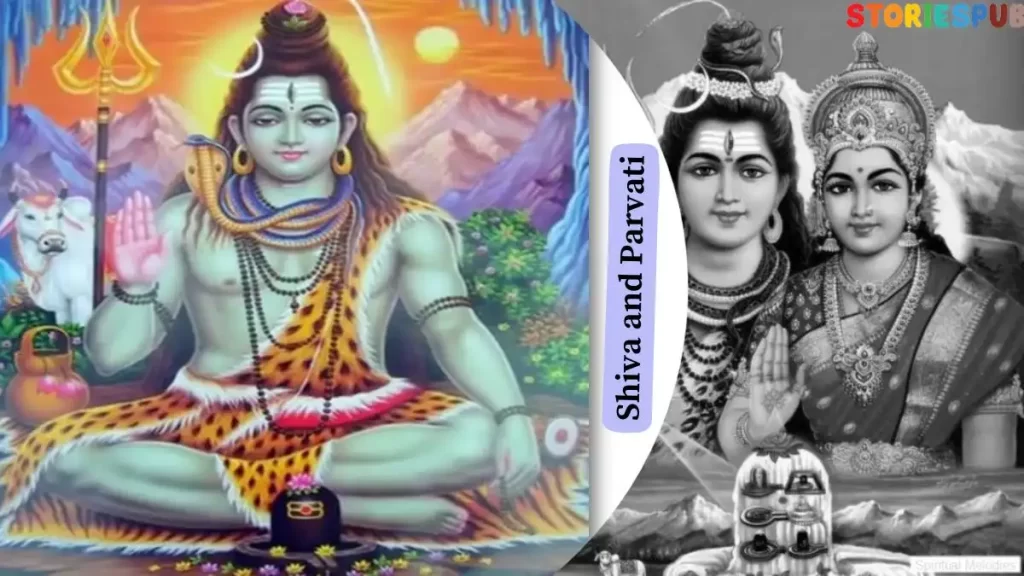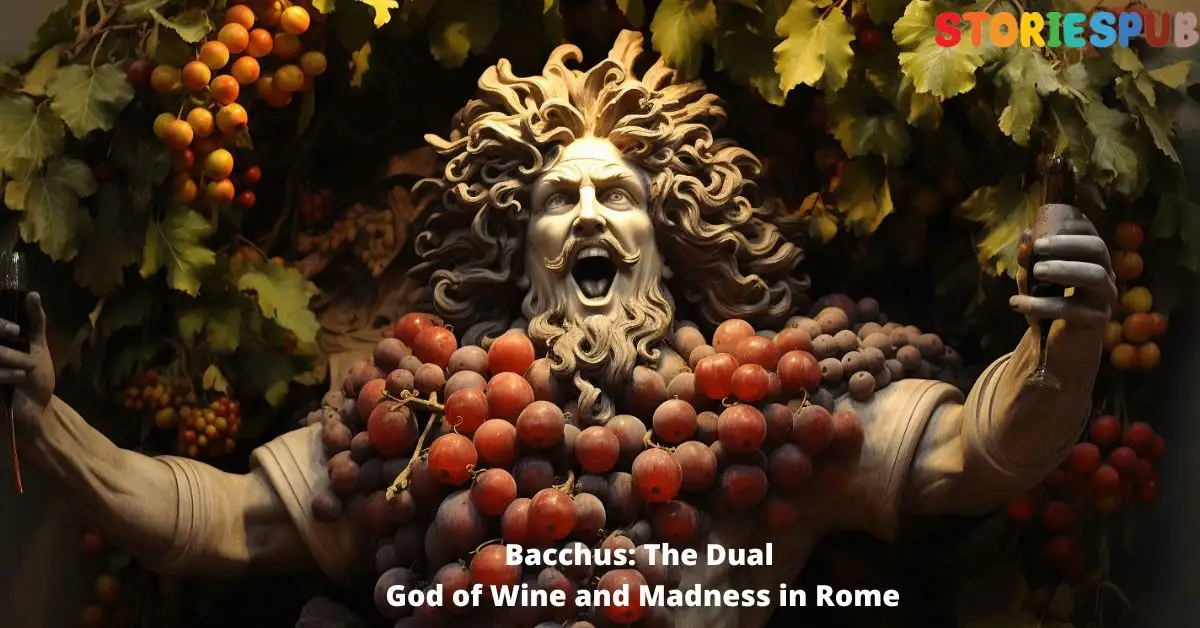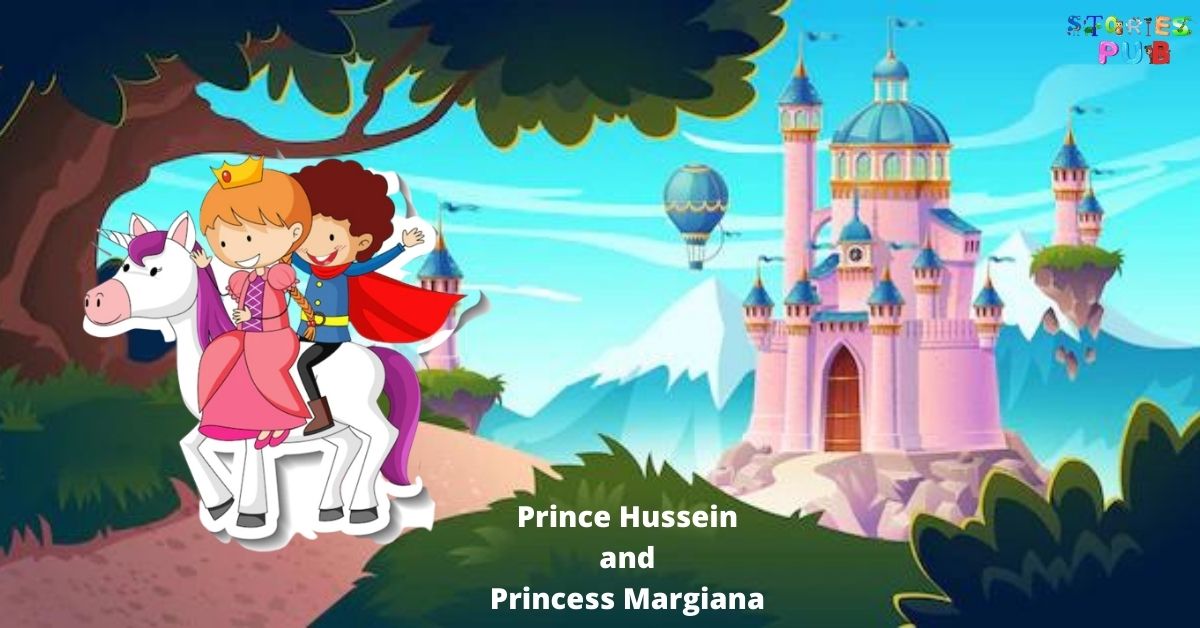Shiva and Parvati Complete Story: Marriage, War, and Love

Lord Shiva and Parvati are two of the most important deities in Hindu mythology. Shiva is often depicted as a meditating ascetic, who embodies the forces of destruction and renewal. Parvati, on the other hand, is the divine consort of Shiva, and represents the feminine aspects of creation, such as fertility, love, and devotion. Together, they form a powerful union that represents the balance of the divine masculine and feminine energies. The symbolism of Shiva and Parvati is rich and complex, and holds great significance in Hindu spirituality.
Shiva and Parvati’s marriage story
Parvati, who was then known as Sati, was the daughter of King Daksha and the wife of Lord Shiva in her previous birth. However, King Daksha disapproved of Lord Shiva and his ways, and did not approve of his daughter’s marriage to him. As a result, he did not invite Lord Shiva to a grand Yagna (fire ritual) that he was hosting, but invited all the other deities and celestial beings.
Sati was deeply hurt and humiliated by her father’s actions, and decided to attend the Yagna against Lord Shiva’s wishes. At the Yagna, she was insulted by her father for her association with Lord Shiva, which angered her so much that she immolated herself in the fire of the Yagna.
When Lord Shiva learned of Sati’s death, he was devastated and withdrew from the world in grief. He went into deep meditation and vowed never to marry again. Meanwhile, Sati was reborn as Parvati, the daughter of the Himalayas. She grew up to be a beautiful and intelligent young woman, and was determined to win Lord Shiva’s heart.
Parvati began to perform intense penance and austerities to please Lord Shiva. She lived in the forest and spent years meditating, fasting, and practicing yoga. Despite her efforts, Lord Shiva remained unmoved and did not acknowledge her devotion.
Undeterred, Parvati continued with her penance, and eventually, Lord Shiva took notice of her dedication and discipline. He was impressed by her determination and decided to test her by appearing before her in the form of a frightening ascetic.
The ascetic challenged Parvati’s devotion and asked her why she was seeking Lord Shiva as her husband. Parvati fearlessly replied that she loved him for who he was, and not for his status or wealth. Lord Shiva was moved by Parvati’s answer and revealed his true form to her. He agreed to marry her, and their union was celebrated by all the deities and celestial beings.
Story behind Lord Shiva Third Eye
Once, Lord Shiva was approached by Lord Brahma and Lord Vishnu, who were arguing about who was the most powerful among them. To settle the dispute, Lord Shiva appeared before them in the form of a towering pillar of light, known as the Jyotirlinga.
Lord Brahma, in an attempt to prove his superiority, took the form of a swan and flew up towards the top of the pillar. Lord Vishnu, in turn, took the form of a boar and dug deep into the ground to reach the bottom of the pillar. However, both were unsuccessful in their attempts to find the beginning or end of the pillar.
Lord Shiva then revealed his true form, and in his anger at their arrogance, opened his third eye. From it, a powerful beam of light emerged, which consumed the swan and nearly blinded Lord Vishnu. Lord Shiva’s third eye was symbolic of his immense power and knowledge, and represented the destruction of ignorance.
After the incident, Lord Brahma and Lord Vishnu realized their folly and acknowledged Lord Shiva’s supremacy. Lord Shiva, pleased with their humility, granted them his blessings and continued to watch over the universe with his three eyes.
The story of Lord Shiva’s third eye is a reminder of the importance of humility and the consequences of arrogance. It also emphasizes the power of Lord Shiva and his role as a destroyer of ignorance and protector of the universe.
Story behind Shiva matted hair
According to Hindu mythology, there are several stories behind Lord Shiva’s matted hair. Here is one of the most popular stories:
Once, Lord Shiva was deep in meditation and lost in the cosmic bliss of the universe. During his meditation, he neglected his physical appearance and his hair grew long and wild, eventually becoming matted.
As Lord Shiva meditated for many years, the weight of his matted hair grew so heavy that it pulled his head down towards the earth. At the same time, the heat of his meditation caused his hair to catch fire, creating a blaze that threatened to consume the entire universe.
To save the world from destruction, Lord Vishnu took the form of a bird, Garuda, and flew to Lord Shiva. Garuda offered to carry Lord Shiva’s hair, which was then tied up into a topknot by Lord Shiva. This topknot became known as the jata or jatamukuta, and is often depicted in images of Lord Shiva.
Another story behind Lord Shiva’s matted hair involves the goddess Ganga, who was asked to descend to earth from the heavens to purify the ashes of Lord Shiva’s devotee. Ganga’s powerful flow threatened to destroy the earth, but Lord Shiva caught her in his hair to break her fall and ease the force of her descent. This story also helps to explain why Lord Shiva is often associated with the holy river Ganga.
The symbolism of Lord Shiva’s matted hair represents his renunciation of worldly attachments, and his immersion in the spiritual realm. His wild hair also symbolizes his untamed nature and his role as a destroyer of ignorance and illusion. The story of Lord Shiva’s matted hair is a reminder of the power of meditation and renunciation in the pursuit of spiritual growth.
Story behind Shiva’s blue throat.
The story behind Lord Shiva’s blue throat, also known as Neelkanth, is an interesting one. Here is the detailed story:
According to Hindu mythology, during the time when the gods and demons were churning the ocean to obtain the nectar of immortality (amrita), a pot of poison (halahala) emerged from the depths of the ocean. The poison was so potent that it threatened to destroy the entire universe.
In order to save the universe from destruction, Lord Shiva came forward and drank the poison, which turned his throat blue. As a result, Lord Shiva came to be known as Neelkanth or the blue-throated one.
The story goes that as Lord Shiva drank the poison, he did not swallow it, but held it in his throat, which turned blue due to the toxic effects of the poison. His throat became a symbol of his selfless sacrifice and his willingness to take on the burden of the entire universe.
The blue throat of Lord Shiva also represents the balance of the divine masculine and feminine energies within him. It is said that the blue color represents Shakti, the divine feminine energy, which is integrated with Shiva’s masculine energy.
In some versions of the story, it is said that Goddess Parvati, the divine consort of Lord Shiva, pressed her finger on his throat to stop the poison from spreading through his body. This act of love and devotion is seen as a manifestation of the deep connection between Lord Shiva and Parvati.
The story of Lord Shiva’s blue throat teaches us about the power of sacrifice and the importance of balance in our lives. It is a reminder of the selflessness and compassion that lies at the heart of Lord Shiva’s character, and inspires us to strive for the same qualities in our own lives.
Famous wars between Shiva and the demons
Shiva War with Demon Tripura
The story of the demon Tripura is one of the most famous war stories between Lord Shiva and demons in Hindu mythology. According to the legend, the demon Tripura had created three indestructible fortresses that were causing chaos in the universe. The fortresses were made of gold, silver, and iron, and were located in three different realms – the heavens, the earth, and the netherworld.
The demon Tripura, along with his army of demons, had been causing destruction and chaos in the universe for a long time. The gods were powerless to defeat him, and the universe was on the brink of destruction. It was then that Lord Shiva took on the challenge to defeat Tripura and put an end to his reign of terror.
Lord Shiva, who was known for his divine power, decided to create a powerful arrow that could destroy all three fortresses in one go. He meditated for a long time and used his power to create the arrow, which was so powerful that it could pierce through the three fortresses at once.
The gods, along with Lord Shiva, went to war with Tripura and his army of demons. The battle was fierce, and the demons were using all their power to protect their fortresses. However, Lord Shiva was determined to win the battle and put an end to Tripura’s reign of terror.
As the battle raged on, Lord Shiva pulled out his powerful arrow and aimed it at the three fortresses. With a mighty roar, he released the arrow, which pierced through all three fortresses and destroyed them in one go. The demon Tripura and his army were defeated, and the universe was saved from destruction.
Shiva’s war with Jalandhar
According to the myth, Jalandhara was a powerful demon who had obtained a boon that made him invincible. He had also taken over the kingdom of the gods and their wealth.
The gods were powerless to defeat Jalandhara, and they sought the help of Lord Shiva, Lord Vishnu, and Goddess Parvati to wage war against him. The three deities decided to work together to defeat the demon and restore peace to the universe.
As the battle between the gods and demons raged on, Jalandhara used his invincibility to his advantage and kept defeating the gods. Lord Shiva then decided to use his divine power to create a beautiful woman named Vrinda, who was the wife of Jalandhara. By doing so, Lord Shiva hoped to break Jalandhara’s invincibility and defeat him.
Jalandhara was deeply in love with his wife Vrinda and believed that her chastity was the source of his invincibility. However, Lord Shiva disguised himself as Jalandhara and approached Vrinda, breaking her chastity and thereby making Jalandhara vulnerable.
With his invincibility gone, Jalandhara was defeated by Lord Shiva and his army of gods. The universe was saved from destruction, and peace was restored.
The story of Jalandhara teaches us the importance of faithfulness, trust, and love in relationships. It also showcases Lord Shiva’s divine power and his role as a protector of the universe. The story is a reminder of the power of collaboration and working together to achieve a common goal, even in the face of seemingly insurmountable challenges.
Shiva war with Andhakasur
Andhakasur was a powerful demon who had been born from the drops of sweat that fell from Lord Shiva’s third eye. He grew up to become very powerful and started to harass the gods, causing chaos and destruction in the universe.
The gods sought the help of Lord Shiva, who decided to take on Andhaka and defeat him. In the ensuing battle, Lord Shiva fought Andhaka with his trident, but the demon kept regenerating his body, making it difficult for Lord Shiva to defeat him.
Lord Shiva then decided to take a different approach to defeat Andhaka. He took off his earring and placed it on Andhaka’s forehead. This stopped the regeneration process and allowed Lord Shiva to defeat him.
According to the legend, the earring that Lord Shiva used to defeat Andhaka was given to him by his wife, Goddess Parvati. It is said to have had the power to stop the regeneration process of demons like Andhaka.
The story of Andhaka teaches us about the power of determination and resilience in the face of challenges. It also showcases Lord Shiva’s divine power and his role as a protector of the universe. The story is a reminder of the importance of working together to overcome adversity, as Lord Shiva was able to achieve victory with the help of his consort Goddess Parvati.
Shiva’s war with Bhasmasura
Bhasmasura was a demon who had obtained a boon from Lord Shiva that made him invincible. However, Bhasmasura became power-hungry and decided to use his powers to destroy Lord Shiva himself.
Bhasmasura was determined to use his newfound powers to become the most powerful being in the universe. He began to harass the gods and other beings, causing chaos and destruction everywhere he went.
The gods were powerless to defeat Bhasmasura, and they sought the help of Lord Shiva. Lord Shiva knew that he could not defeat Bhasmasura directly, as he was invincible due to the boon he had received. So, Lord Shiva disguised himself as a beautiful woman named Mohini, and went to meet Bhasmasura.
When Bhasmasura saw Mohini, he was mesmerized by her beauty and fell in love with her. He asked Mohini to marry him, and she agreed on the condition that he follow her every command. Bhasmasura agreed, and Mohini asked him to place his hand on his own head.
As soon as Bhasmasura placed his hand on his head, he was destroyed by his own powers. Lord Shiva had tricked him into asking for his own destruction, using his intelligence and cunning to defeat the powerful demon.
Shiva’s war with other Gods
The War with Lord Indra:
Once, Lord Indra, the king of gods, became arrogant and boastful about his power and status. He was so conceited that he stopped respecting other gods, including Lord Shiva. This behavior enraged Lord Shiva, who decided to teach Indra a lesson. Shiva created a demon named Virabhadra out of his own anger, who took the form of a massive, powerful warrior.
Lord Shiva ordered Virabhadra to wage war against Indra and the other gods to teach them humility. As the battle ensued, Virabhadra wreaked havoc, defeating many gods and even destroying Indra’s palace. Realizing their mistake, the gods, including Indra, sought forgiveness from Lord Shiva. Shiva then relented and stopped the destruction caused by Virabhadra. This war taught Indra and the other gods the importance of humility and respect.
The War with Lord Vishnu:
In Hindu mythology, Lord Shiva and Lord Vishnu are considered two of the three supreme gods, along with Lord Brahma. Although they usually maintain a harmonious relationship, there is a story where they engage in a battle.
The story begins with the marriage of Lord Shiva to the goddess Sati. Lord Brahma, in an attempt to test the couple’s love and devotion, creates a beautiful nymph named Mohini. He sends her to the wedding ceremony to seduce Lord Shiva. However, Shiva remains unaffected by Mohini’s beauty and charms, staying devoted to Sati.
Impressed by Shiva’s devotion, Lord Vishnu takes the form of Mohini and tries to test Shiva himself. This time, Shiva realizes it’s Vishnu in disguise and becomes furious. A fierce battle ensues between the two gods, with the universe shaking from their mighty blows. As the war escalates, the other gods intervene and plead with Shiva and Vishnu to stop fighting.
Realizing the consequences of their actions, both gods cease their battle and reconcile. They acknowledge each other’s power and importance in maintaining the balance of the universe, and the harmony between them is restored.
These stories highlight the importance of humility, respect, and recognizing the divine roles of the gods in Hindu mythology. While Lord Shiva is known for his destructive power, these tales remind us of his wisdom and the need for balance in the world.
The War between Lord Shiva and Lord Kartikeya:
Lord Kartikeya, also known as Murugan or Skanda, is the son of Lord Shiva and Goddess Parvati. He is the god of war and the commander-in-chief of the celestial army. There’s a story where Lord Shiva and Lord Kartikeya engage in a battle to test each other’s prowess.
The story begins when Lord Kartikeya, after a long meditation, gains immense power and knowledge. He becomes prideful and desires to test his skills against his father, Lord Shiva. He challenges Shiva to a battle, hoping to prove his superiority. Lord Shiva, recognizing the importance of humility, agrees to the challenge as a means to teach his son a valuable lesson.
As the battle commences, both father and son display their extraordinary skills and powers. The war is fierce, and the universe trembles under the might of their blows. The other gods watch in awe, worried about the outcome of the fight.
During the battle, Lord Kartikeya realizes that no matter how powerful he is, he cannot surpass his father’s strength and wisdom. As the fight goes on, Kartikeya’s pride begins to wane, and he starts to understand the importance of respecting and learning from his father.
Seeing that his son has learned the lesson, Lord Shiva stops the battle. Kartikeya humbly accepts defeat, acknowledging his father’s wisdom and power. The gods rejoice as peace and harmony are restored, and Lord Kartikeya emerges as a wiser and more humble deity.
In this story, the battle between Lord Shiva and Lord Kartikeya serves as a reminder of the importance of humility and respecting the wisdom and experience of our elders. It also showcases the strong bond between a father and his son, with both teaching and learning from each other through the course of the fight.
The War between Lord Shiva and Arjuna:
Arjuna, one of the Pandava brothers from the epic Mahabharata, was a great warrior and a devoted disciple of Lord Shiva. There’s a story where Arjuna and Lord Shiva engage in a battle to test Arjuna’s skills and devotion.
The story begins when Arjuna seeks divine weapons to prepare for the upcoming Kurukshetra war. He decides to perform penance to please Lord Shiva and acquire the powerful Pashupatastra, a celestial weapon capable of unparalleled destruction. As Arjuna meditates, he attracts the attention of Shiva, who decides to test his disciple’s devotion and prowess as a warrior.
Lord Shiva takes the form of a tribal hunter and appears before Arjuna. At the same time, a demon named Mooka disguises himself as a wild boar and charges towards Arjuna. Both Shiva (in the hunter’s form) and Arjuna release arrows to kill the boar. When the boar is killed, a dispute arises between Arjuna and the hunter over who shot the fatal arrow.
Arjuna, unaware of the hunter’s true identity, challenges him to a duel to settle the dispute. As the battle ensues, Arjuna is surprised by the hunter’s exceptional skills and power. Despite his best efforts, Arjuna is unable to defeat the hunter, and his own weapons and energy are exhausted.
Eventually, Arjuna realizes that the hunter is none other than Lord Shiva himself. He falls at Shiva’s feet, humbly seeking forgiveness for his arrogance. Pleased with Arjuna’s devotion and skill, Shiva reveals his true form and blesses him with the Pashupatastra. Arjuna emerges from this battle as a more humble and devoted disciple.
This story illustrates the importance of humility, devotion, and recognizing the divine in all forms. It also demonstrates the bond between a devotee and the deity, highlighting the significance of faith and surrender in achieving one’s goals.
Parvati wars with Demons
Goddess Parvati, the consort of Lord Shiva, is a symbol of power, love, and devotion in Hindu mythology. As the goddess of strength, she is often depicted engaging in battles against demons to protect the universe. Here are two popular stories of Parvati’s wars with demons:
The Slaying of Durgasura:
Once, a demon named Durgasura performed severe penance to please Lord Brahma. Pleased with his devotion, Brahma granted him the boon of invincibility, with the condition that he could only be defeated by a woman. Durgasura, confident that no woman could ever defeat him, became arrogant and started creating havoc in the world.
The demon’s atrocities angered the gods, who prayed to Goddess Parvati to save them. Parvati, realizing the gravity of the situation, transformed herself into a fierce warrior goddess, known as Durga. Armed with divine weapons gifted by various gods, she set out to confront Durgasura.
A fierce battle ensued between Durga and Durgasura. The goddess, with her immense power and skill, managed to overpower and slay the demon. With Durgasura’s death, peace and harmony were restored to the world. This victory also earned Parvati the name “Durga,” which symbolizes the triumph of good over evil.
The Slaying of Mahishasura:
Mahishasura, a shape-shifting buffalo demon, had performed severe penance to please Lord Brahma. Brahma granted him a boon that he could not be killed by any man or god. Empowered by this boon, Mahishasura grew arrogant, terrorizing the gods and the people of the world.
Unable to defeat the demon, the gods sought the help of the holy trinity—Brahma, Vishnu, and Shiva. The trinity, along with other gods, combined their energies and created a powerful female warrior goddess, who was an incarnation of Parvati. This goddess, named Chandika or Durga, was bestowed with divine weapons and a fierce lion as her mount.
Chandika confronted Mahishasura, and a brutal battle unfolded. Mahishasura, being a shape-shifter, kept changing his form to confuse the goddess. However, Chandika matched his every move with her agility and divine powers. Finally, she pinned him down and beheaded him with her trident.
Goddess Parvati, in the form of Chandika or Durga, restored peace and order by slaying Mahishasura. This victory is celebrated as the festival of Navratri or Durga Puja, symbolizing the triumph of good over evil.
These stories highlight the strength and courage of Goddess Parvati, who fiercely fought to protect the world from the demons’ tyranny. These tales also serve as a reminder of the power of feminine energy and the importance of balance in the universe.
Why is Parvati also known as Shakti?
Parvati is known as Shakti because she represents the feminine cosmic energy or power in the universe. In Hinduism, the term “Shakti” refers to the divine energy or force that is the source of creation, preservation, and destruction. Shakti is believed to be the dynamic aspect of the supreme consciousness, which is personified as the goddess.
Parvati, as the consort of Lord Shiva, embodies this divine feminine energy. Shiva and Shakti are considered inseparable, with Shiva representing the passive, static, and absolute aspect of the divine, while Parvati, as Shakti, represents the dynamic, creative, and active aspect. They complement each other, symbolizing the balance and interdependence between the masculine and feminine energies in the universe.
In many myths and legends, Parvati is depicted as assuming various powerful forms, such as Durga and Kali, to battle demons and protect the world from evil. These manifestations further emphasize her role as Shakti, the embodiment of divine energy, strength, and power.
In essence, Parvati is known as Shakti because she represents the cosmic feminine energy that drives the creation, sustenance, and transformation of the universe. Her various forms and stories celebrate the power and importance of the divine feminine in Hindu mythology and spirituality.
Symbolism of the union between Shiva and Parvati
The union between Shiva and Parvati in Hindu mythology represents the perfect balance and harmony between the divine masculine and feminine energies, which are the fundamental principles that govern the universe. Their relationship holds deep symbolic meaning and is considered to be the epitome of love, devotion, and spiritual unity.
Divine Masculine and Feminine Energies:
Shiva and Parvati symbolize the complementary aspects of the divine. Shiva, also known as Purusha, represents the masculine principle, which is consciousness, stillness, and the unmanifested potential. Parvati, also known as Shakti or Prakriti, represents the feminine principle, which is energy, dynamism, and the manifesting force. Together, they create a cosmic balance, representing the interdependence of consciousness and energy in the process of creation, preservation, and destruction.
Creation and Preservation:
The union of Shiva and Parvati is also symbolic of the process of creation and preservation. Shiva is often associated with destruction and dissolution, but this aspect is necessary for the renewal and regeneration of life. Parvati, as the nurturing and creative force, complements Shiva’s destructive aspect, ensuring the continuity of existence. Their union ensures the cyclic nature of life, maintaining the equilibrium in the universe.
Spiritual Union and Yoga:
In Hindu spirituality, the union of Shiva and Parvati also represents the ultimate goal of yoga, which is the union of the individual soul (Atman) with the supreme consciousness (Brahman). Shiva symbolizes the transcendent reality, while Parvati represents the immanent reality of the world. Their union signifies the merging of the individual soul with the universal consciousness, leading to spiritual enlightenment and liberation (Moksha).
Love and Devotion:
The love story of Shiva and Parvati, as portrayed in various myths and legends, is a symbol of divine love, devotion, and commitment. Parvati’s unwavering love and dedication towards Shiva, and Shiva’s eventual reciprocation, exemplify the spiritual bond between the devotee and the divine. Their relationship serves as a model for human relationships, emphasizing the importance of love, respect, and devotion in fostering harmony and spiritual growth.
Ardhanarishvara Story
Ardhanarishvara is a composite androgynous form of Lord Shiva and Goddess Parvati, symbolizing the synthesis of masculine and feminine energies. The term “Ardhanarishvara” is derived from the Sanskrit words “ardha” (half), “nari” (woman), and “Ishvara” (lord), meaning “The Lord Who Is Half Woman.” The story of Ardhanarishvara has a deep symbolic significance, highlighting the interdependence and balance between the divine masculine and feminine energies.
The story begins with Lord Brahma, the creator, finding it challenging to create the universe with only male beings. He realizes that the universe needs both male and female energies for creation and balance. Brahma then prays to Lord Shiva, asking for his help in creating the female counterpart.
Shiva, understanding the need for balance, agrees to help Brahma. To demonstrate the inseparable and harmonious nature of masculine and feminine energies, Shiva merges with his consort, Goddess Parvati, forming Ardhanarishvara. In this form, Shiva’s half is on the right, representing the masculine aspect, and Parvati’s half is on the left, representing the feminine aspect.
The emergence of Ardhanarishvara helps Brahma proceed with the creation of the universe. This composite form also becomes a source of inspiration for sages and seekers of spiritual wisdom, who meditate upon Ardhanarishvara to attain a deep understanding of the oneness and unity of existence.
Ardhanarishvara symbolizes the perfect balance and unity between the masculine and feminine energies that pervade the cosmos. It teaches that both energies are vital and complementary, and that neither is superior or inferior to the other. The story of Ardhanarishvara emphasizes the importance of acknowledging and respecting the divine feminine and masculine within oneself, as well as in the world, to achieve harmony and spiritual growth.
Some famous temples dedicated to Lord Shiva and Parvati
There are numerous temples dedicated to Lord Shiva and Goddess Parvati across India, reflecting their immense significance in Hinduism. These temples are revered places of worship and attract devotees from all over the world. Some of the most famous temples dedicated to Lord Shiva and Parvati include:
Kashi Vishwanath Temple, Varanasi: One of the most revered Shiva temples in India, Kashi Vishwanath Temple is situated in Varanasi, Uttar Pradesh. The temple houses the Vishwanath Jyotirlinga, one of the twelve Jyotirlingas, which are the most sacred abodes of Shiva. The temple is an important pilgrimage site for Hindus and is believed to grant liberation from the cycle of birth and death.
Somnath Temple, Gujarat: Located in the western state of Gujarat, Somnath Temple is one of the twelve Jyotirlinga shrines. The temple has a rich history and has been destroyed and rebuilt multiple times. It is an important pilgrimage site and is also known for its stunning architecture.
Meenakshi Amman Temple, Madurai: Dedicated to Goddess Parvati, known here as Meenakshi, and her consort Lord Shiva, referred to as Sundareswarar, this temple is located in Madurai, Tamil Nadu. The temple is famous for its exquisite architecture, intricate sculptures, and vibrant gopurams (temple towers). Meenakshi Amman Temple is an important pilgrimage site and a popular tourist attraction.
Kedarnath Temple, Uttarakhand: Situated in the Garhwal Himalayas in Uttarakhand, Kedarnath Temple is dedicated to Lord Shiva and is one of the Char Dham pilgrimage sites. The temple is believed to have been built by the Pandavas from the Mahabharata and later restored by Adi Shankaracharya. The temple is accessible only through a trek or helicopter services, and it remains closed during the winter months due to harsh weather conditions.
Kamakhya Temple, Assam: Located in Guwahati, Assam, Kamakhya Temple is dedicated to Goddess Kamakhya, a form of Goddess Parvati. It is an important Shakti Peeth, which are the sacred sites associated with the goddess. The temple is famous for its annual Ambubachi Mela, which attracts thousands of devotees and is believed to celebrate the goddess’s creative and nurturing powers.
These are just a few examples of the many temples dedicated to Lord Shiva and Goddess Parvati throughout India. These temples serve as important centers for spiritual, cultural, and artistic expression and hold great significance for Hindu devotees.
Hey kids, how much did you like The Shiva and Parvati Complete Story: Marriage, War, and Love? Please share your view in the comment box. Also, please share this story with your friends on social media so they can also enjoy it, and for more such Hindu Mythology, , please bookmark storiespub.com.
Check out other stories that we have:



















